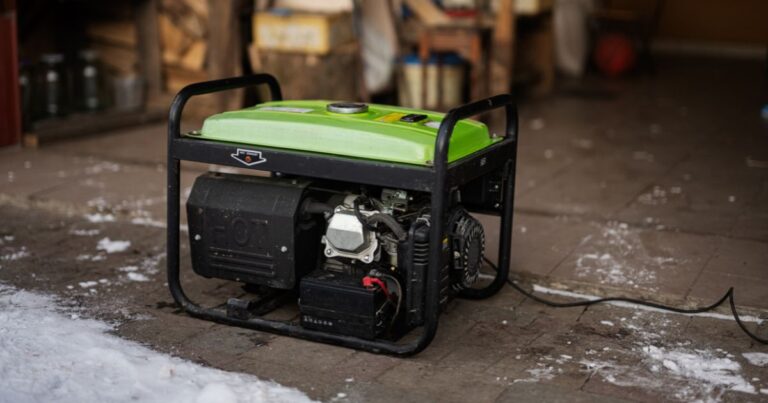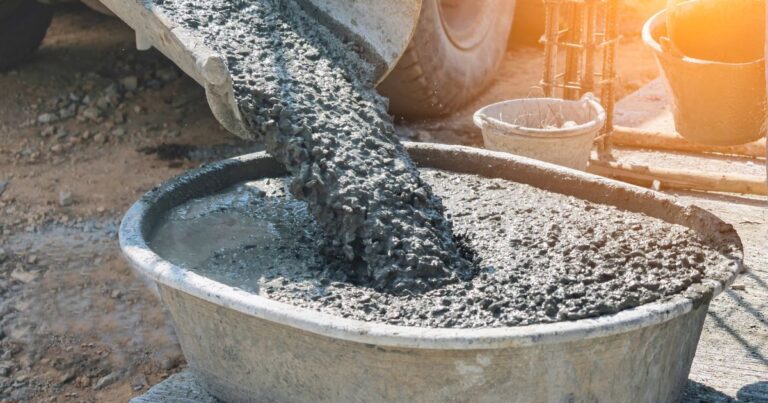When it comes to the safety, stability, and reliability of products — especially in industries like pharmaceuticals, cosmetics, food, and medical devices — understanding how long a product will last is vital. However, waiting for months or years to see how a product performs over time isn’t always practical or feasible. That’s where accelerated aging comes into play.
In this article, we introduce you to our Advanced Accelerated Aging Calculator — a powerful tool built right into this blog post to help you instantly calculate how long to test a product at elevated temperatures in order to simulate its actual shelf life. Whether you’re a product developer, quality assurance specialist, or regulatory affairs manager, this tool can save you time, effort, and money while ensuring compliance and confidence.
Accelerated Aging Calculator
What is Accelerated Aging?
Accelerated aging is a scientifically accepted method for simulating the passage of time by placing a product under elevated temperatures to speed up chemical or physical degradation. This technique allows manufacturers to predict the real-time shelf life of products within a much shorter test period.
Instead of storing a product for 1 year to verify its stability, you can perform an accelerated aging study at 55°C for about 40 days (depending on conditions), and achieve the same insights.
This method is based on the Arrhenius equation, a principle from physical chemistry that relates temperature to the rate of chemical reactions.
How Accelerated Aging Works
When temperature increases, molecular motion increases, which in turn speeds up chemical reactions. The Arrhenius equation mathematically models this relationship. Using this model, we can estimate how much faster degradation occurs at higher temperatures compared to standard (ambient) conditions.
Here’s the formula: AAF (Accelerated Aging Factor)=Q10TAA−TRT10\text{AAF (Accelerated Aging Factor)} = Q_{10}^{\frac{T_{AA} – T_{RT}}{10}}AAF (Accelerated Aging Factor)=Q1010TAA−TRT
- TAA: Accelerated Aging Temperature (°C)
- TRT: Real-Time Ambient Storage Temperature (°C)
- Q10: Reaction Rate Factor (commonly 2.0)
Once the AAF is calculated, you can estimate the time needed at elevated temperature to simulate long-term storage: AAT (Accelerated Aging Time)=Target Shelf LifeAAF\text{AAT (Accelerated Aging Time)} = \frac{\text{Target Shelf Life}}{\text{AAF}}AAT (Accelerated Aging Time)=AAFTarget Shelf Life
Why Use Our Accelerated Aging Calculator?
While the math behind accelerated aging is well-documented, manually running calculations every time can be error-prone and time-consuming. That’s why we built a user-friendly calculator directly into this blog post — no spreadsheets, no complicated equations, and no technical headaches.
Key Features:
- Real-time calculation of AAF and AAT
- Input fields for shelf life, test temperature, and Q10
- Friendly interface and mobile responsiveness
- Instant results in both days and weeks
Just scroll down, enter your values, and get the answer. It’s that simple.
Use Case Scenarios for Accelerated Aging
Accelerated aging is used in multiple industries where product stability, durability, and shelf life are crucial.
1. Pharmaceuticals
Drug manufacturers use accelerated aging to validate how long medicines can remain effective and safe on shelves. Regulatory bodies often require stability data before product approval.
2. Medical Devices
Medical device companies apply accelerated aging to test packaging integrity, seal strength, and sterility maintenance over time.
3. Cosmetics and Skincare
Skincare products are sensitive to light, temperature, and humidity. Accelerated aging helps predict when active ingredients might degrade or change in texture and color.
4. Food and Beverages
While shelf life testing in food is more complex due to microbial activity, accelerated studies still help in estimating physical or chemical changes like fat oxidation.
5. Consumer Electronics
Manufacturers use accelerated conditions to test battery degradation, screen durability, and long-term performance under stress.
Try the Calculator Now
Use the simple form below to calculate Accelerated Aging Time (AAT) for your product testing:
Enter the accelerated aging temperature (between 40–70°C), real-time storage temperature (20–25°C), Q10 value (1.8–2.5), and the target shelf life in days. The calculator will show you how many days and weeks of elevated-temperature testing are needed.
How to Choose the Right Parameters
Choosing the right inputs is essential to get accurate results. Here are some quick tips:
- TAA (Accelerated Aging Temperature): Choose a temperature that speeds up reactions without damaging the product. Common values: 50°C, 55°C, 60°C.
- TRT (Real-Time Temperature): Use 23–25°C as standard ambient shelf temperature.
- Q10 Value: Typically ranges from 1.8 to 2.5. A Q10 of 2 means reaction rates double for every 10°C increase in temperature.
By understanding how these factors affect your calculations, you can make better-informed decisions about your product testing protocols.
Shelf Life vs. Accelerated Aging Time – Reference Chart
| Target Shelf Life | AAF = 9.19 (55°C vs 23°C) | AAT (Days) | AAT (Weeks) |
|---|---|---|---|
| 30 Days | 9.19 | ~3.3 Days | 0.47 Weeks |
| 60 Days | 9.19 | ~6.5 Days | 0.93 Weeks |
| 90 Days | 9.19 | ~9.8 Days | 1.4 Weeks |
| 180 Days | 9.19 | ~19.6 Days | 2.8 Weeks |
| 1 Year (365 Days) | 9.19 | ~40 Days | 5.7 Weeks |
| 2 Years (730 Days) | 9.19 | ~80 Days | 11.4 Weeks |
These are estimates assuming:
- TAA = 55°C
- TRT = 23°C
- Q10 = 2.0
The calculator automatically adjusts for any other combination you input.
Regulatory Acceptance
The use of accelerated aging is accepted by international standards and regulatory bodies such as:
- FDA (U.S. Food and Drug Administration)
- ICH (International Council for Harmonisation)
- ISO 11607 for medical device packaging
- ASTM F1980 for sterile barrier system aging
Our calculator follows the same scientific foundation used in these frameworks, making it a compliant and trusted approach to estimate shelf life.
Who Can Use This Tool?
This calculator is ideal for:
- R&D scientists
- Quality control managers
- Packaging engineers
- Regulatory affairs specialists
- Entrepreneurs developing new products
- Contract manufacturers
Whether you’re a solo entrepreneur or a large-scale manufacturer, this tool helps reduce risk, save time, and improve product development cycles.
Benefits of Using This Calculator
- Speeds up product testing by simulating long-term effects
- Reduces cost by shortening storage testing timelines
- Improves accuracy with real-time scientific calculations
- Saves time by eliminating manual math or spreadsheet templates
- Improves decision making for product launches and formulations
You can now focus more on innovation and less on estimation.
Final Thoughts
Shelf life estimation doesn’t have to be complex, slow, or costly. With this Accelerated Aging Calculator, you have a powerful tool that gives you accurate, instant answers based on real scientific principles — all from the comfort of your web browser.
As industries demand faster turnaround times and stricter compliance, tools like these become essential. Whether you’re launching a skincare line, validating a drug product, or testing medical devices, this calculator empowers you to make decisions backed by science.
So go ahead — plug in your values above and see how quickly you can predict the future performance of your product.
15 FAQs related to the Accelerated Aging Calculator
What is accelerated aging?
Accelerated aging is a testing method that simulates long-term product aging by exposing it to elevated temperatures.
It helps estimate shelf life faster than real-time testing.
Commonly used in pharmaceuticals, medical devices, and cosmetics.
Based on the Arrhenius equation.
How does the Accelerated Aging Calculator work?
The calculator uses the Arrhenius-based formula to determine how long a product should be aged under high temperature to simulate real shelf life.
Inputs: aging temperature, real-time temperature, shelf life, and Q10.
Output: aging factor and test duration in days and weeks.
What is the Q10 value?
Q10 is a factor representing the rate of chemical reaction change with every 10°C temperature increase.
Common value: 2.0 (reactions double per 10°C rise).
Typical range: 1.8 to 2.5 depending on the product.
What temperature should I use for accelerated aging?
Use temperatures between 40°C and 60°C.
55°C is commonly used in industry.
Avoid exceeding 60°C to prevent thermal damage.
What is the ambient or real-time temperature?
Ambient temperature is the normal storage temperature of your product.
Typically between 20°C and 25°C.
23°C is often used for medical and pharmaceutical standards.
Is the calculator compliant with regulatory standards?
Yes, the calculator is based on accepted industry standards.
Follows FDA, ISO 11607, ASTM F1980, and ICH guidelines.
Suitable for use in regulatory documentation and stability studies.
Can this calculator be used for food products?
Yes, but with caution.
Chemical changes can be estimated.
Microbial stability may require additional testing not covered by this model.
What is Accelerated Aging Factor (AAF)?
AAF shows how much faster degradation occurs at test temperatures.
Higher AAF = faster aging simulation.
Formula: AAF = Q10 ^ ((TAA – TRT)/10)
How do I interpret the result in days or weeks?
The calculator shows how many days or weeks of accelerated testing simulate the desired real-time shelf life.
Example: 40 days at 55°C may simulate 1 year at 23°C.
Can I use the calculator for any product?
Yes, if the product degrades via temperature-sensitive chemical or physical changes.
Suitable for drugs, cosmetics, packaging, polymers, etc.
Not ideal for biologics or temperature-instable products.
What happens if I change the Q10 value?
he output test duration changes.
Higher Q10 → lower test time.
Choose a realistic Q10 based on your product class.
Why is 2.0 the standard Q10 value?
Q10 = 2.0 assumes a reaction rate doubling every 10°C.
Most common industry value for plastics, polymers, and packaging.
Some products may use 1.8 or 2.3 based on stability data.
What is the maximum test temperature allowed?
Avoid exceeding 60°C.
Higher temperatures may alter product properties or cause breakdown.
Use 50–55°C for most reliable simulations.
Can I use this calculator for medical device packaging?
Yes, especially under ISO 11607 and ASTM F1980 guidelines.
Often used to validate sterile barrier integrity.
Input shelf life, temperature, and Q10 for packaging validation.
Is the result from the calculator accepted for FDA submissions?
Yes, if paired with supporting documentation.
This calculator uses scientifically accepted formulas.
Always validate with actual product data and regulatory guidance.

Niraj Ghanghoriya is a tech-savvy content creator with a passion for building advanced online tools and writing in-depth, user-focused guides. With a strong focus on clarity, engagement, and SEO, he simplifies complex topics to help users make informed decisions.



